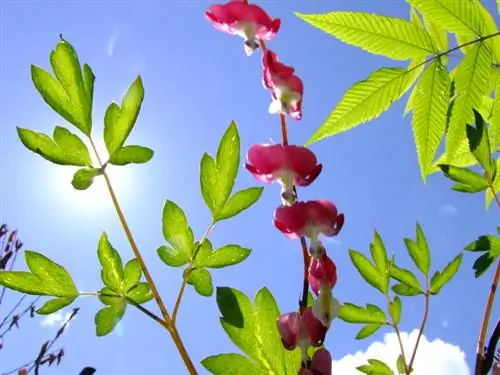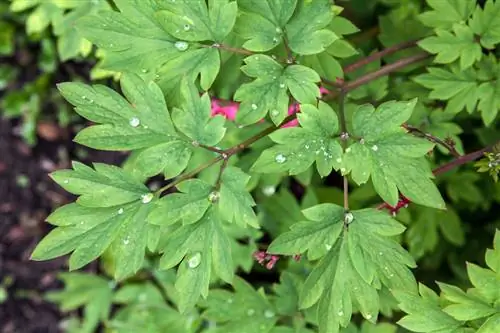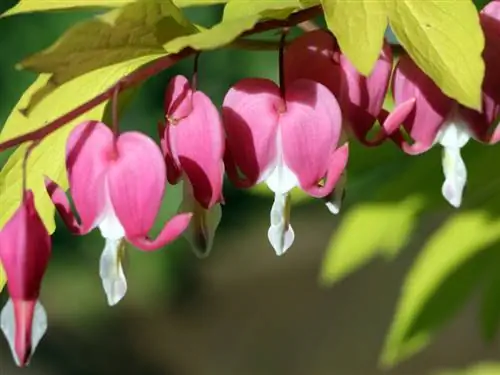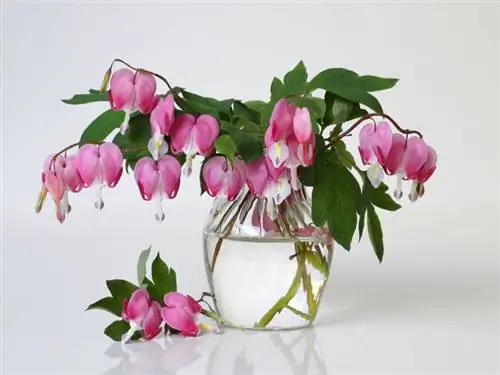- Author admin [email protected].
- Public 2023-12-16 16:46.
- Last modified 2025-01-23 11:20.
The bleeding heart is a very faithful plant that should be transplanted as rarely as possible. Unfortunately, the plant will quickly resent such measures and will produce fewer flowers as a result. However, you can reduce the risk by combining transplanting with division of the fast-growing perennial. This means you can kill two birds with one stone, as you can multiply your plants in the easiest possible way.
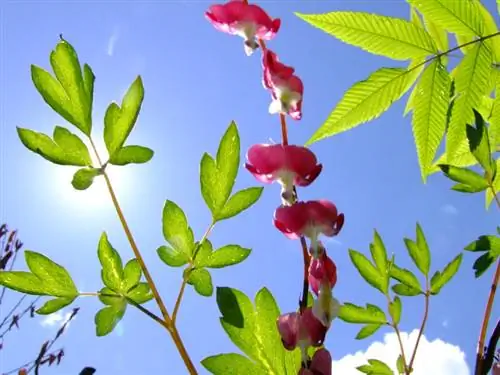
How can I transplant a bleeding heart?
To successfully transplant a bleeding heart, dig a new planting hole, carefully remove the perennial, being careful not to damage any roots, and replant it in the new location. The best time for this is directly after flowering or in spring.
Transplanting a bleeding heart correctly
Theoretically, you don't need to transplant the Bleeding Heart, because the plant can spend its entire life in the same place. However, such a measure may be necessary for various reasons, such as a redesign of the garden or because the location is not ideal and the plant does not feel comfortable there. Be careful when transplanting and try not to damage any roots:
- First dig the planting hole at the new location.
- This should be dug as generously and deeply as possible.
- Mix the excavated material with a good portion of mature compost.
- Now carefully dig up the perennial using a digging fork.
- Shake off the adhering soil lightly.
- Check the roots for any damage.
- Replant the Bleeding Heart in the new location.
- Press the soil firmly.
- Water the plant thoroughly - moisture will help it take root again.
The best time for transplanting is directly after flowering, when the plant begins to retreat. Alternatively, you can implement them in early spring, but then protection from late cold is necessary.
Share Bleeding Heart
Take advantage of the opportunity when transplanting and divide the rapidly and strongly growing rhizomes of the bleeding heart, so you will gain several young plants at once. The division is done quickly, all you need is a spade or a sharp knife.
- Select several sections that have at least one shoot and strong roots.
- Make sure to only use clean (preferably disinfected!) and sharp tools.
- This reduces the risk of pathogens being introduced.
- The divided plants can be planted immediately in their designated location outdoors.
Tip
Since all parts, but especially the roots, of the Bleeding Heart are poisonous, you should wear gloves both when moving and dividing the plant to be on the safe side.

